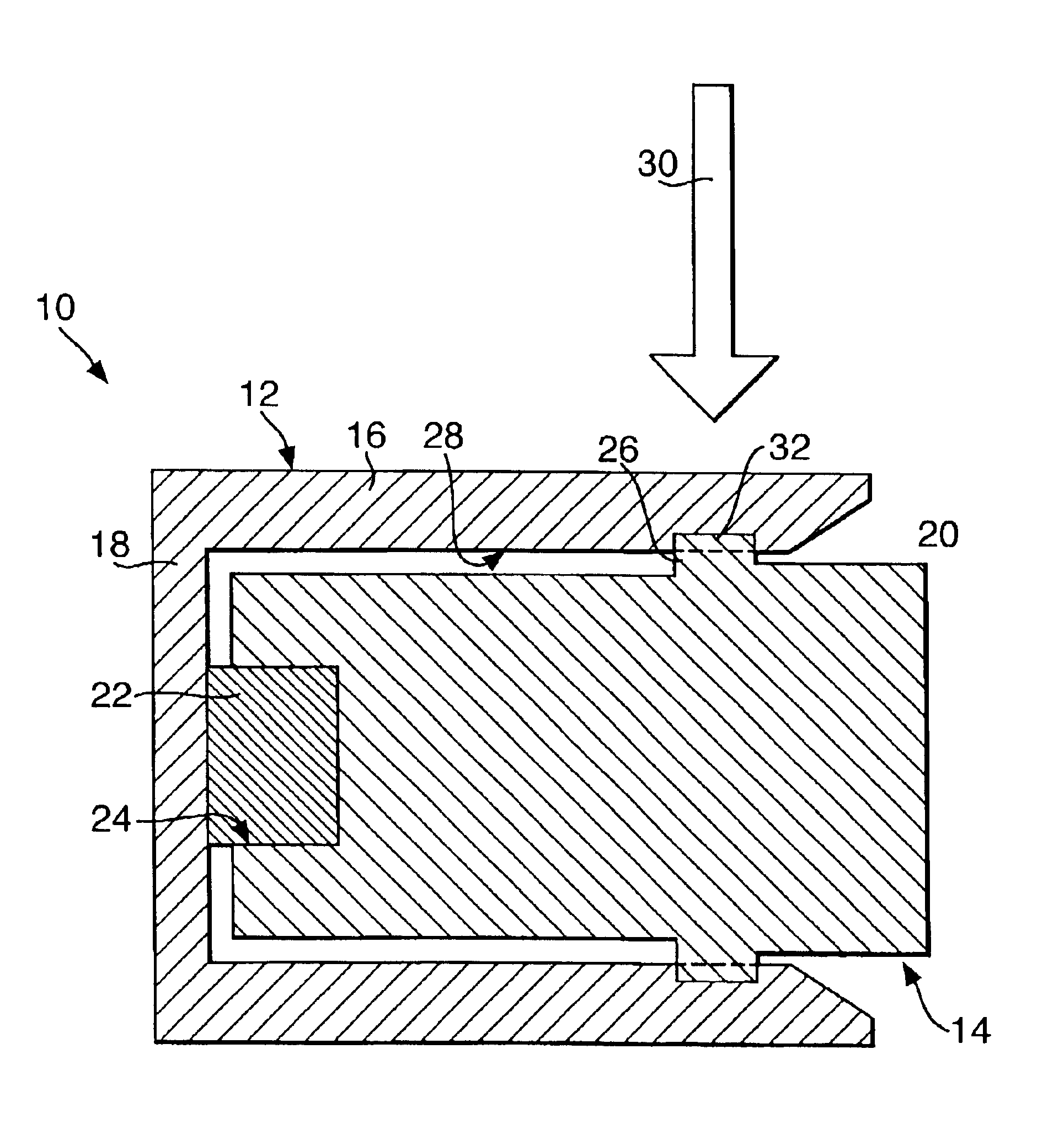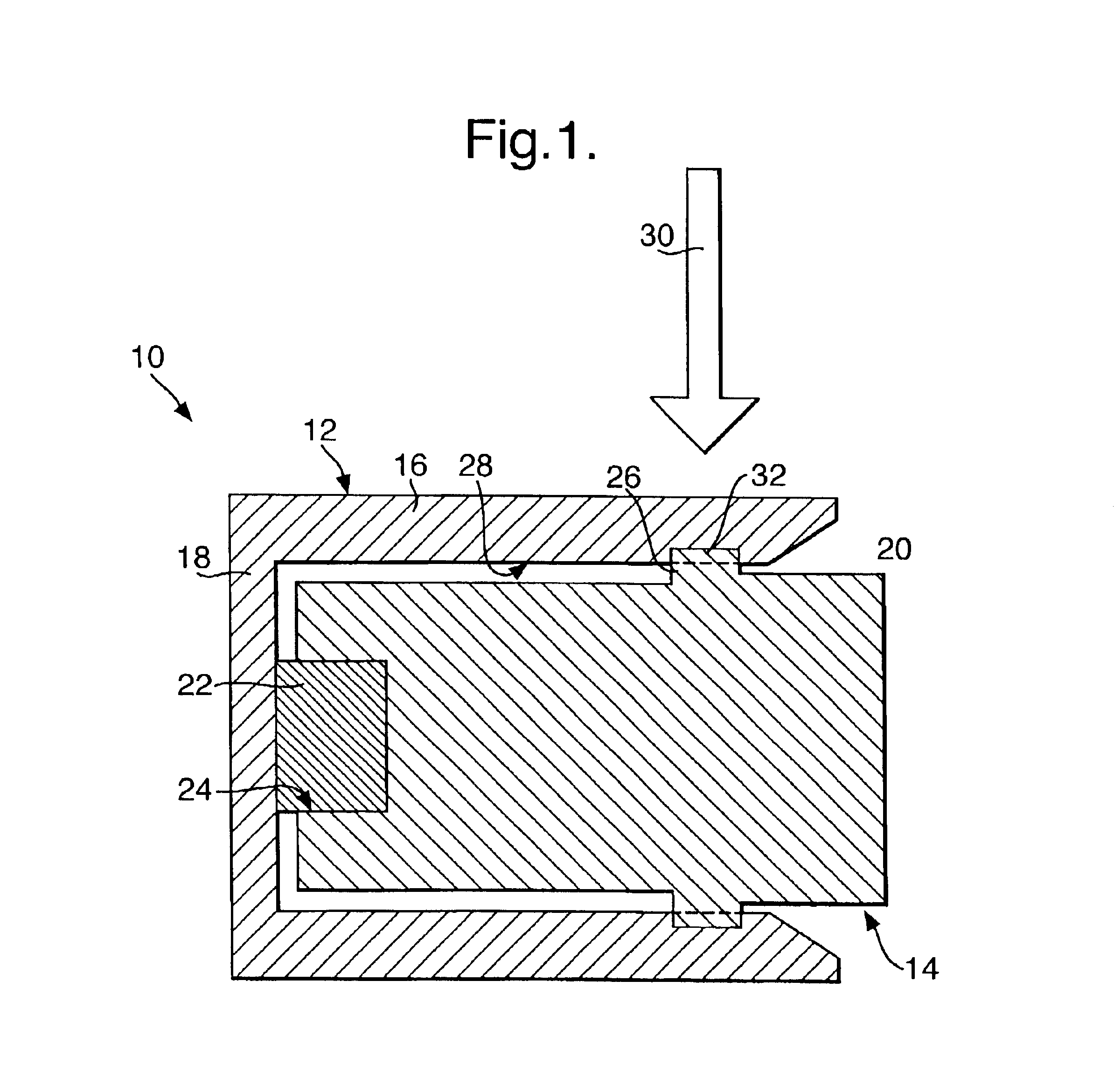Process for transmission laser welding of plastic parts
a technology of transmission laser and plastic parts, which is applied in the direction of layered products, chemistry apparatus and processes, and other domestic articles, can solve the problems of plastic parts adapting and the pressure forces at the contact zone will generally increase, so as to reduce the penetration depth, reduce the loss of reflection, and increase the radiation dispersion
- Summary
- Abstract
- Description
- Claims
- Application Information
AI Technical Summary
Benefits of technology
Problems solved by technology
Method used
Image
Examples
Embodiment Construction
FIG. 1 shows a sectional view of a camshaft sensor 10 with a plastic housing, which is composed of an outer housing part 12 and an inner housing part 14 made of a thermoplastic polymer, preferably including glass fibers. The outer housing part comprises a cylindrical shell 16 closed at one end by a flat bottom 18. The inner housing part 14 comprises a cylindrical element 20 which is partially received in the cylindrical shell 16 of the outer housing part 12. The outer diameter of the cylindrical element 20 is smaller than the inner diameter of the cylindrical shell 16. Reference sign 22 indicates a magnetic sensor, which is arranged in a recess 24 in the internal end of the cylindrical element 20. The magnetic sensor 22 is in abutment against the inner side of the flat bottom 18 of the outer part 12. Although not shown, electrical components are accommodated in the cylindrical element 20 of the inner housing part 14. Such a camshaft sensor 10 allows to detect the variation of magnet...
PUM
| Property | Measurement | Unit |
|---|---|---|
| wavelength | aaaaa | aaaaa |
| wavelength | aaaaa | aaaaa |
| wavelength | aaaaa | aaaaa |
Abstract
Description
Claims
Application Information
 Login to View More
Login to View More - R&D
- Intellectual Property
- Life Sciences
- Materials
- Tech Scout
- Unparalleled Data Quality
- Higher Quality Content
- 60% Fewer Hallucinations
Browse by: Latest US Patents, China's latest patents, Technical Efficacy Thesaurus, Application Domain, Technology Topic, Popular Technical Reports.
© 2025 PatSnap. All rights reserved.Legal|Privacy policy|Modern Slavery Act Transparency Statement|Sitemap|About US| Contact US: help@patsnap.com


